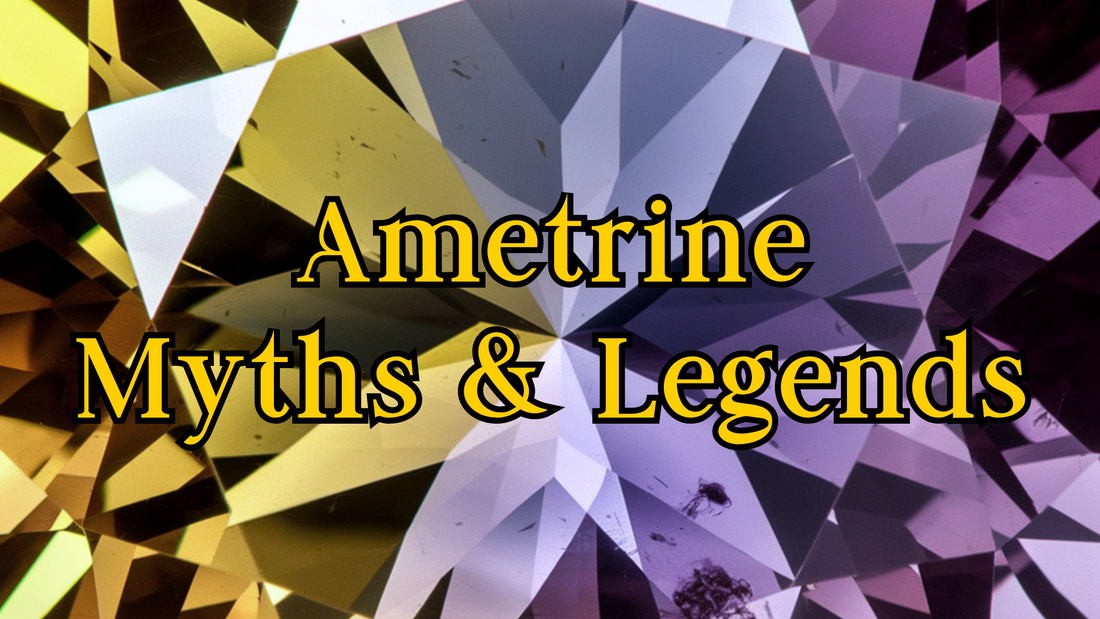
Ametrine Myths and Legends: A One-Gemstone Love Story
When you think of gemstones steeped in myths and legends, your mind probably jumps to ancient times—gods, enchanted stones, or at the very least, a sorcerer cursing someone into a rock. But when it comes to ametrine, the legend list is… well, short. And by short, I mean there's basically one.
But don't worry—what ametrine lacks in ancient folklore, it makes up for with a fascinating history, an epic love story, and a colour combination that looks like a sunset captured in crystal. Let’s dive into the one, the only, the legend of Princess Anahí.

The Legend of Princess Anahí: Love, Conquest, and a Really Nice Rock

Our story takes us to 17th-century Bolivia, home to the world’s only commercially viable source of natural ametrine. The Ayoreo people lived in the region, and among them was the beautiful and kind-hearted Princess Anahí. As fate would have it, a Spanish conquistador (whose name seems to be lost to history) arrived and fell madly in love with her.
Now, whether Anahí loved him back or was just playing along for survival is unclear, but what we do know is that she gave him a gemstone unlike any he’d ever seen—half purple, half yellow. This gem, with its two colours blending seamlessly, was said to symbolise their two worlds coming together.
Tragically, as is the case in most dramatic gemstone-origin stories, things didn’t end well. Anahí’s people weren’t thrilled with the whole Spanish invasion situation (which seems fair enough to me), and in the ensuing conflict, she was mortally wounded. Some versions of the story say that with her dying breath, she revealed the location of the mine where the bicoloured stones were found, ensuring her legacy would live on. Others say the gemstone and the mines location were actually part of her dowry, a gift of love and unity between two worlds. Either way, the Spanish conquistador took the gemstones back to Spain, presenting them to his Queen as a marvel of the New World.
Romantic? Absolutely. Historically verified? Not so much. There’s no real evidence that Anahí existed or that she married a Spanish conquistador, but the story has endured as a beautiful piece of gemstone lore.

Why Aren’t There More Ametrine Myths?
Unlike stones that have been dug up for thousands of years, ametrine remained a bit of a hidden gem (pun fully intended, sorry 😁) for most of history. While amethyst and citrine have been known and revered for centuries, their beautiful fusion wasn’t widely recognised until the 1970s, when commercial mining of ametrine finally took off.
The reason for this? While small ametrine deposits have been found in places like Brazil and India, they aren’t commercially viable. The only significant source of gem-quality ametrine remains the Anahí mine in Bolivia. With such a limited geographic range, it didn’t have centuries of worldwide cultural significance to rack up a library of legends. No Greek gods turning people into ametrine, no ancient Chinese emperors hoarding it for luck—just one legendary princess and a very exclusive mine.

The Modern Magic of Ametrine
Even if it doesn’t have a mythology collection to rival amethyst, ametrine has built a strong reputation in the modern gem world. Its striking blend of colours is said to balance energies—combining the soothing, spiritual qualities of amethyst with the bright, energising vibes of citrine. It’s a gemstone that symbolises harmony, duality, and, if you believe in such things, a well-balanced life (or at the very least a very aesthetically pleasing piece of jewellery).
So, while ametrine may not come with a cast of ancient deities or curses, it does come with a love story, a one-of-a-kind origin, and a look that’s pure magic.
